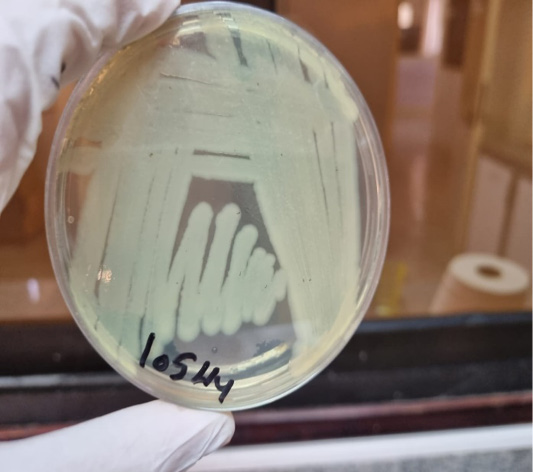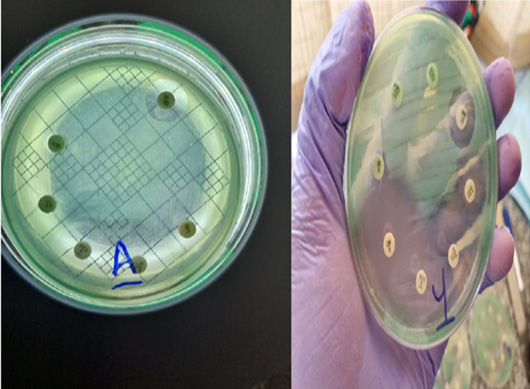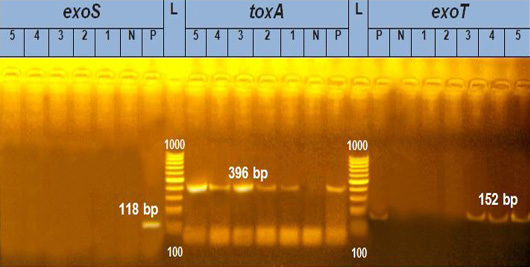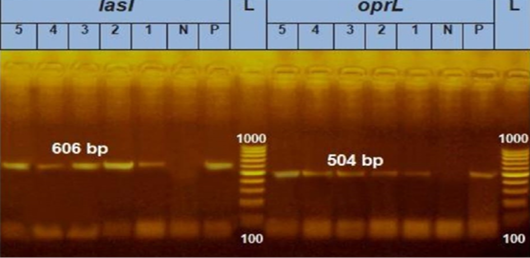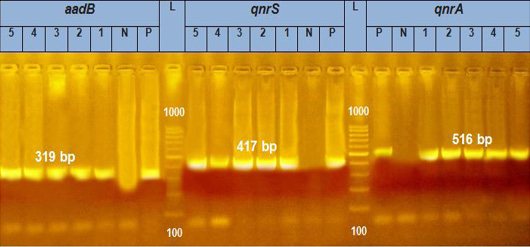Evaluation of the Synergistic Antimicrobial Activity of Amikacin with Norfloxacin against Pseudomonas aeruginosa Isolated from Buffaloes Clinical Mastitis
Evaluation of the Synergistic Antimicrobial Activity of Amikacin with Norfloxacin against Pseudomonas aeruginosa Isolated from Buffaloes Clinical Mastitis
Hanaa M. Abdelkhalek1, Hanan E. Nagib1, Randa S. Elias1, Saad S. Mansour1, Walid S. Mousa2*
Bright green color colonies of P. aeruginosa on cetrimide agar medium.
Sensitivity test of P. aeruginosa against different antimicrobials with synergism profile.
Amplification of tox A, exo S and exo T genes of P. aeruginosa at 396bp, 118 bp and 152 bp respectively, by multiplex PCR. Lane L: 100 bp DNA ladder; Lane 3–5 positive samples for exoT at 152 bp; and 1-5 for toxA genes at 396 bp with no detection of exoS; Lane N: control negative; Lane P: control positive.
Amplification of iasI and oprL genes of P. aeruginosa at 606 and 504 bp by multiplex PCR. Lane L: 100 bp DNA ladder; Lane 1–5 positive samples. Lane N: Control Negative; Lane P: Control Positive.
Amplification of aadB, qnrS and qnrA genes of P. aeruginosa at 319bp, 417 bp and 516 bp, respectively, by multiplex PCR. Lane L: 100 bp DNA ladder; Lane 1–5 positive samples for aadB, qnrS and qnrA genes; Lane N: control negative; Lane P: control positive.




